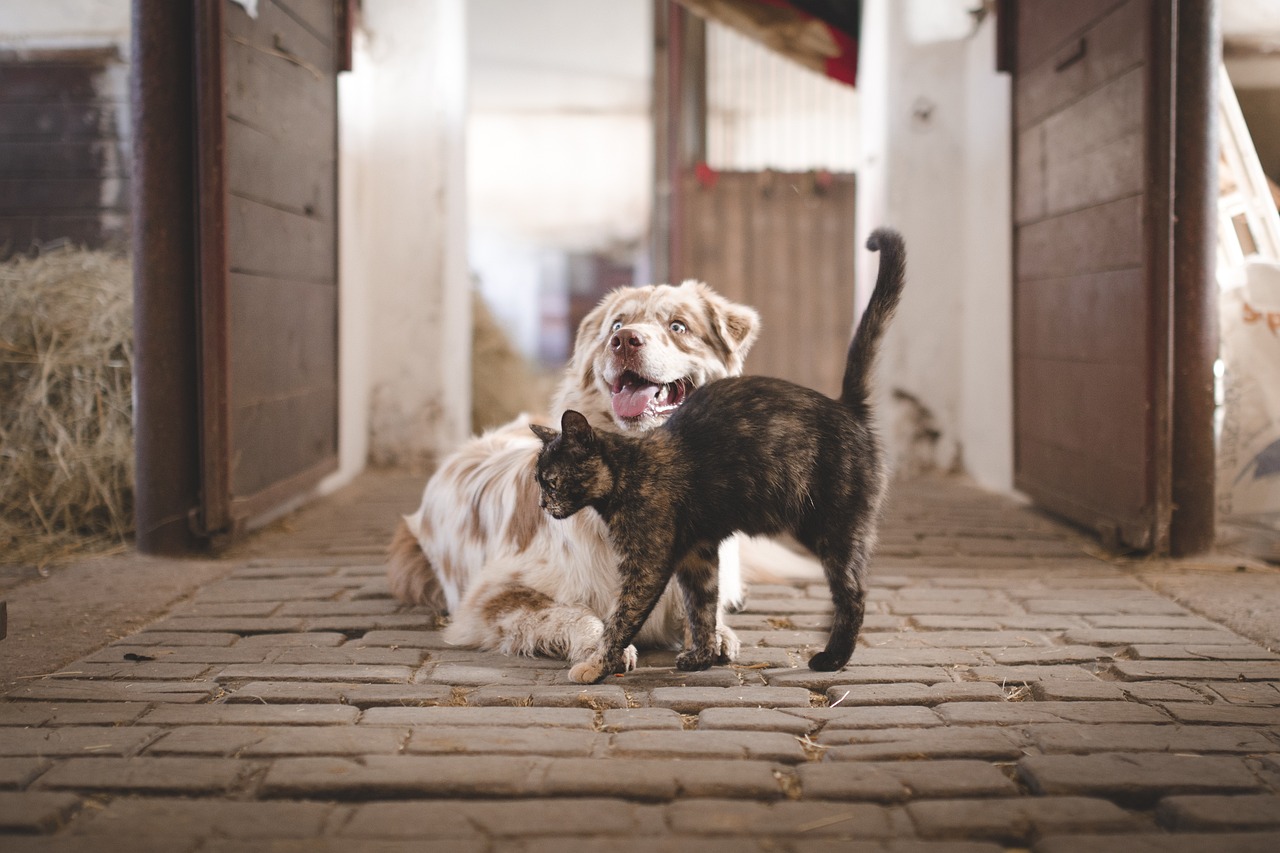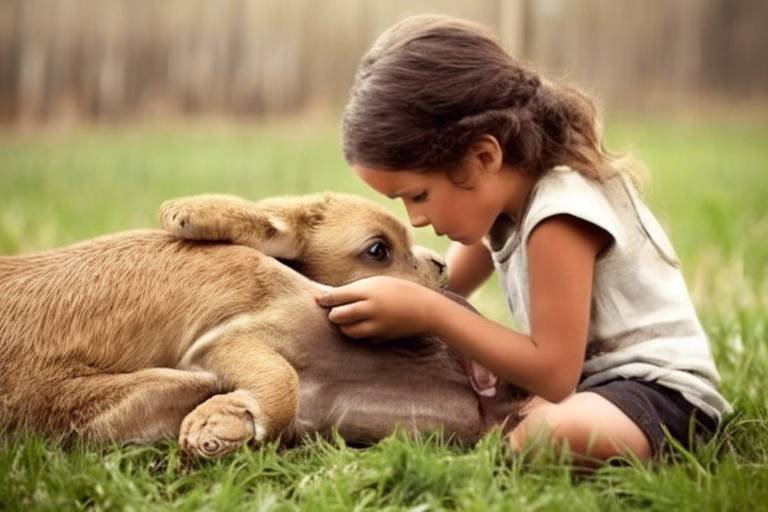The Role of Animal Control in Promoting Adoption
When we think about animal control, the first image that often comes to mind is that of officers rescuing stray dogs or managing a situation involving a lost pet. However, the role of animal control agencies goes far beyond just enforcement; they are pivotal in promoting pet adoption and creating a compassionate community. These agencies act as a bridge between stray animals and potential adopters, facilitating a process that not only saves lives but also enriches the lives of families and individuals who choose to adopt.
One of the most significant contributions of animal control agencies is their ability to manage the population of stray and abandoned animals. By providing shelter, medical care, and behavioral assessments, they prepare animals for adoption, ensuring that they are healthy and ready for their new homes. This proactive approach not only reduces the number of strays on the streets but also enhances the overall safety of the community. Imagine a neighborhood where stray animals are no longer a concern; this vision becomes a reality through the diligent efforts of animal control.
Moreover, these agencies implement various programs aimed at educating the public about responsible pet ownership and the importance of adoption. They often host events, workshops, and outreach campaigns to raise awareness about the plight of homeless animals and the benefits of adopting rather than buying pets. Through these initiatives, animal control agencies create a culture of compassion, encouraging community members to take an active role in animal welfare.
In addition to education, animal control agencies also work closely with local shelters and rescue organizations to streamline the adoption process. They often provide resources such as low-cost spaying/neutering, vaccination drives, and microchipping services, which are essential for ensuring that adopted pets remain healthy and safe. By making these services accessible, they remove barriers that might prevent potential adopters from making the leap to bring a furry friend into their home.
Ultimately, the role of animal control in promoting adoption is about creating a network of support for both animals and their future families. It's about fostering a sense of community where every animal has a chance at a loving home. Through their tireless efforts, animal control agencies not only save lives but also inspire a movement towards responsible pet ownership and compassion for all living beings. In this way, they are not just animal control officers; they are champions of change in the world of animal welfare.
- What is the role of animal control agencies in pet adoption?
Animal control agencies manage stray populations, provide shelter and medical care, and promote responsible pet ownership through educational programs and outreach initiatives. - How does pet adoption benefit the community?
Pet adoption reduces the number of strays, enhances public safety, and fosters a culture of compassion and responsibility towards animals. - What are the costs associated with adopting a pet from a shelter?
Adoption fees are typically lower than purchasing from breeders and often include vaccinations, spaying/neutering, and microchipping, making it a cost-effective option. - How can I support my local animal control agency?
You can support local agencies by volunteering, donating, or participating in community outreach programs that promote animal welfare and adoption.

Understanding Animal Control Agencies
Animal control agencies serve as the backbone of our communities when it comes to managing the well-being of stray and abandoned animals. These organizations are not just about rounding up lost pets; they play a crucial role in ensuring public safety while promoting responsible pet ownership. Imagine a world where every lost dog or cat has a safe place to go, where every animal is treated with compassion and respect. That’s the vision that drives animal control agencies every day.
At their core, animal control agencies are tasked with a variety of responsibilities, including:
- Rescuing stray and abandoned animals
- Enforcing local animal laws and regulations
- Educating the public about responsible pet ownership
- Facilitating adoptions to find permanent homes for animals
- Providing resources for spaying and neutering
These agencies often work closely with local shelters and rescue groups, creating a network of support that benefits both animals and the community. They are the first responders when an animal is in distress, whether it’s a dog wandering the streets or a cat stuck in a tree. Their quick actions can make a world of difference in an animal’s life.
Furthermore, animal control agencies engage in community outreach programs to raise awareness about the importance of spaying and neutering pets. By providing educational resources, they help reduce the number of unwanted litters and, ultimately, the number of animals that end up in shelters. This proactive approach not only helps control the stray population but also fosters a culture of compassion and responsibility among pet owners.
In addition to these essential services, animal control agencies often face challenges that can hinder their effectiveness. Limited funding and resources can restrict their ability to carry out programs and initiatives. However, many agencies are finding innovative ways to overcome these obstacles, such as forming partnerships with local businesses and community organizations to enhance their outreach efforts.
In conclusion, understanding the role of animal control agencies is vital for anyone who cares about animal welfare. They are more than just enforcers of the law; they are advocates for the voiceless, working tirelessly to create a better world for animals and humans alike. By supporting these agencies, we can help them continue their important work, ensuring that every animal has a chance at a loving home.

The Importance of Pet Adoption
Pet adoption is not just about giving an animal a home; it's about making a significant impact on the lives of both the pet and the owner. Every year, millions of animals find themselves in shelters, waiting for someone to take them in. By choosing to adopt, you are not only providing a loving environment for a deserving animal but also playing a vital role in addressing the overpopulation crisis in shelters. It's a win-win situation that fosters a culture of compassion and responsibility.
When you adopt a pet, you're helping to reduce the number of stray animals on the streets. Strays often face numerous challenges, including hunger, disease, and the threat of being picked up by animal control. By adopting, you're giving a second chance to an animal that may have faced a harsh life. This act of kindness can be incredibly fulfilling, as you witness the transformation of a once-lost soul into a beloved companion.
Moreover, pet adoption can have a ripple effect throughout the community. When more people adopt rather than buy pets, it sends a powerful message about the importance of saving lives. This shift in mindset encourages others to consider adoption as a viable option, further promoting the idea that every animal deserves a chance at happiness. It's like a chain reaction of love and care that can ultimately lead to a more humane society.
One of the most heartwarming aspects of adoption is the bond that develops between the pet and the owner. Pets have an incredible ability to enrich our lives, providing companionship and emotional support that can be life-changing. Whether it's a dog wagging its tail when you come home or a cat curling up on your lap, these small moments of joy are what make pet ownership so rewarding.
In addition to the emotional benefits, adopting a pet is also a cost-effective choice. Adoption fees are generally much lower than purchasing from breeders, and they often include essential services such as vaccinations, spaying/neutering, and microchipping. This means you can save money while still ensuring your new furry friend is healthy and well-cared for. In essence, adopting from a shelter is not just an act of kindness; it's a financially smart decision.
Ultimately, the importance of pet adoption goes beyond just saving individual lives; it's about creating a community that values compassion and responsibility. By adopting, you're not only helping an animal in need but also inspiring others to do the same. So, the next time you're considering bringing a pet into your life, think about the profound impact your choice can make—not just for that animal, but for the entire community.
- What is the first step in adopting a pet? Start by visiting your local animal shelter or rescue organization to learn about available pets.
- Are shelter animals healthy? Yes, most shelter animals are vaccinated and checked by veterinarians before adoption.
- What should I consider before adopting a pet? Consider your lifestyle, living situation, and the time and resources you can dedicate to a new pet.
- Can I adopt a pet if I have children or other pets? Absolutely! Many shelters can help you find a pet that fits well with your family.
Benefits of Adopting Pets
Adopting a pet can be one of the most rewarding decisions you ever make. It's like finding a hidden treasure that not only brings joy into your life but also saves another being from a potentially bleak future. When you adopt, you're not just giving an animal a home; you're also gaining a loyal companion who will fill your days with love and laughter. Think about it—how many times have you come home after a long day, only to be greeted by a wagging tail or a gentle purr? That’s the magic of pet adoption!
Furthermore, adopting pets has numerous emotional benefits. Studies have shown that pet owners often experience lower levels of stress and anxiety. The simple act of petting a dog or cat can release oxytocin, the love hormone, which promotes feelings of happiness and connection. This bond can be particularly beneficial for those struggling with loneliness or depression. It's as if these animals have a special superpower to heal our hearts!
Another significant aspect of pet adoption is the cost-effectiveness it offers. When you adopt from a shelter, the adoption fee typically covers essential services like vaccinations, spaying/neutering, and sometimes even microchipping. In contrast, purchasing a pet from a breeder often comes with a hefty price tag and additional vet expenses. By choosing to adopt, you not only save money but also contribute to reducing the overall stray animal population. It's a win-win situation!
Adopting pets also plays a crucial role in saving lives. Each time you adopt, you are directly impacting the life of that animal and creating space in the shelter for another animal in need. This cycle of compassion fosters a community where animals are valued and cared for. It's not just about finding a pet; it's about being part of a larger movement that advocates for animal welfare. Imagine the ripple effect your one decision can create—encouraging friends and family to consider adoption and inspiring others to act with kindness towards animals!
In addition to the emotional and financial benefits, adopting pets fosters a sense of community responsibility. When you adopt, you become part of a network of pet owners who advocate for animal rights and responsible pet ownership. You can participate in local events, share your experiences, and even help educate others about the importance of adoption. This sense of belonging can be incredibly fulfilling and empowering.
In conclusion, the benefits of adopting pets are vast and varied. From emotional support and cost savings to life-saving impacts and community involvement, adopting a pet is a choice that enriches your life while making a difference in the world. So why wait? Open your heart and home to a furry friend in need, and experience the joy of pet adoption!
Q: What should I consider before adopting a pet?
A: Consider your lifestyle, living situation, and the time you can dedicate to a pet. Research different breeds and their needs to find a good match for your home.
Q: How can I prepare my home for a new pet?
A: Ensure your home is safe by removing hazardous items, securing trash cans, and creating a comfortable space for your new pet to relax.
Q: What if I have other pets at home?
A: Introduce your new pet to your existing pets gradually and monitor their interactions to ensure a smooth transition.
Q: Are shelter animals trained?
A: Many shelter animals are already trained or have basic obedience skills. However, it’s essential to invest time in training and socialization to help them adjust to their new home.
Cost-Effectiveness of Adoption
When considering bringing a new furry friend into your home, the often stands out as a compelling reason to choose a shelter pet over a pet from a breeder. Many people are surprised to learn that adopting from an animal control agency or a shelter is usually much more economical. Adoption fees typically range from $50 to $200, which may seem like a lot at first glance. However, when you break down what’s included, it becomes clear that this is a smart financial choice.
Most adoption fees cover essential services that you would otherwise have to pay for separately if you were to buy a pet from a breeder. For instance, the fee often includes:
- Vaccinations: Ensuring your pet is protected from common diseases is crucial for their health and your peace of mind.
- Spaying/Neutering: This not only helps control the pet population but also can prevent certain health issues and behavioral problems.
- Microchipping: A tiny chip can make a huge difference in reuniting you with your pet if they ever get lost.
Let’s do a little comparison to illustrate the savings:
| Service | Cost of Adoption | Cost if Purchased Separately |
|---|---|---|
| Vaccinations | Included | $75-$150 |
| Spaying/Neutering | Included | $100-$300 |
| Microchipping | Included | $25-$50 |
| Total | $50-$200 | $200-$500 |
As you can see from the table above, adopting a pet not only saves you money upfront but also helps you avoid unexpected costs down the line. Moreover, when you adopt, you’re not just saving money; you’re also giving a loving animal a chance at a better life. It’s a win-win situation! You get a loyal companion, and the animal gets a forever home. The emotional and psychological benefits of having a pet are invaluable, making every penny spent on adoption worth it.
In conclusion, adopting a pet is not only a financially savvy choice but also a deeply rewarding one. By choosing to adopt, you’re not only saving money but also contributing to a larger cause—reducing the number of homeless animals and promoting a culture of compassion in your community. So, the next time you’re considering adding a furry member to your family, remember that adoption is the way to go!
Q: What is the average cost of adopting a pet?
A: The average cost of adopting a pet can range from $50 to $200, depending on the shelter and the services included.
Q: Are shelter pets healthy?
A: Yes! Most shelter pets are vaccinated, spayed/neutered, and microchipped before adoption, ensuring they are healthy and ready for their new homes.
Q: Can I return the pet if it doesn't work out?
A: Many shelters have return policies in place. It's best to check with your local shelter about their specific policies regarding returns.
Q: Do I need to provide anything special when adopting?
A: Generally, you'll need to provide identification and may be required to fill out an adoption application. Some shelters may also conduct home visits.
Saving Lives Through Adoption
Every time someone decides to adopt a pet, they are not just gaining a new furry friend; they are saving a life. Shelters are often overwhelmed with animals in need, and each adoption creates a ripple effect that benefits not just the adopted animal, but also the community as a whole. When a pet is adopted, it opens up space in the shelter for another animal who is waiting for a chance at a loving home. This cycle of compassion is fundamental to reducing the number of homeless pets.
Consider this: for every animal that finds a home, there is a story of hope and transformation. Many of these animals come from difficult backgrounds, having experienced neglect or abandonment. When they are adopted, they often blossom into loving companions, showcasing their true personalities. It’s a bit like finding a diamond in the rough—what may initially seem like a troubled animal can turn into a loyal friend who brings endless joy to a household.
Moreover, adopting a pet can have profound emotional benefits for the adopter as well. Studies have shown that owning a pet can reduce stress, anxiety, and feelings of loneliness. The bond formed between an adopted animal and its new owner can be incredibly rewarding, creating a sense of purpose and fulfillment. In many ways, the act of adoption is a two-way street—both the pet and the owner benefit from the relationship.
Additionally, adopting pets from shelters often comes with the added benefit of knowing that the animal has been assessed for health and behavior. Many shelters conduct thorough evaluations and provide necessary medical care, including vaccinations and spaying/neutering, which means that adopters are not only saving a life but also bringing home a pet that is ready to join their family. This proactive approach by shelters helps to ensure that both the animal and the owner have a positive experience.
In summary, adopting pets is not just an act of kindness; it is a vital step in creating a compassionate community. By choosing to adopt, individuals contribute to a larger movement aimed at reducing stray populations and promoting responsible pet ownership. It’s a choice that echoes through the lives of countless animals and humans alike, fostering a culture of love and responsibility. So next time you consider adding a pet to your family, remember that your decision could mean the world to an animal in need.
- What are the benefits of adopting a pet? Adopting a pet provides companionship, emotional support, and the satisfaction of giving an animal a second chance at life.
- How does adoption help reduce the stray population? Each adoption frees up space in shelters, allowing them to take in more animals, thus reducing the overall number of strays.
- Are shelter animals healthy? Most shelters assess the health and behavior of their animals, providing necessary medical care before adoption.
- What costs are associated with adopting a pet? Adoption fees usually cover vaccinations, spaying/neutering, and microchipping, making it a cost-effective option.
- How can I support my local animal shelter? You can support your local shelter by adopting, volunteering, donating, or participating in community outreach programs.
Community Outreach Programs
Community outreach programs are the lifeblood of animal control agencies, serving as a bridge between the organization and the public. These initiatives are designed to educate people about the pressing issues of pet overpopulation, the importance of adoption, and responsible pet ownership. Imagine a world where every animal has a loving home; that's the vision these programs strive to achieve. By engaging with the community, animal control agencies can dispel myths about shelter animals and showcase the joy of adopting a pet in need.
One of the most effective ways to reach the community is through educational workshops and events. These gatherings often include:
- Free vaccination clinics
- Spay and neuter programs
- Pet care seminars
- Adoption fairs
These events not only provide valuable information but also create a sense of community, where pet lovers can come together to share their experiences and learn from one another. For instance, at an adoption fair, families can meet various animals looking for homes, making the decision to adopt feel more personal and immediate.
Moreover, social media has become an invaluable tool for outreach. Animal control agencies utilize platforms like Facebook, Instagram, and Twitter to share heartwarming stories of successful adoptions, promote upcoming events, and educate followers about the benefits of adopting from shelters. Engaging content, such as videos of playful puppies or cats, can create emotional connections that inspire people to consider adoption.
Partnerships with local businesses and organizations can amplify these outreach efforts. For example, a local pet store might host a day where a portion of sales goes to the animal control agency, while also featuring adoptable pets in their store. These collaborations not only raise funds but also increase visibility for the animals in need. It’s a win-win situation that fosters a culture of compassion and responsibility towards animals.
Ultimately, community outreach programs are about creating awareness and building relationships. They empower individuals to take action, whether it’s adopting a pet, volunteering at a shelter, or simply spreading the word about the importance of animal welfare. Through these initiatives, animal control agencies not only promote adoption but also cultivate a community that cares deeply for its furry inhabitants.

Challenges in Promoting Adoption
Despite the numerous benefits of pet adoption, animal control agencies encounter several challenges that can impede their efforts. One significant hurdle is the prevalence of public misconceptions surrounding shelter animals. Many people erroneously believe that animals in shelters are there because they have behavioral issues or health problems. This stigma can deter potential adopters from considering these animals, who often just need a loving home and a second chance at life. Imagine walking into a shelter and seeing a dog that seems a little shy; many might overlook that pup, thinking it’s untrainable, when in reality, it just needs a bit of patience and love.
Another challenge is funding limitations. Animal control agencies often operate on tight budgets, which can restrict their ability to promote adoption effectively. Without adequate funding, they may lack the resources needed for marketing campaigns, community outreach programs, or even basic care for the animals. This can lead to fewer adoptions and more animals remaining in shelters longer than necessary. It’s a bit like trying to throw a party with no budget; you want to invite everyone and have a great time, but without the right resources, it’s hard to make it happen.
Furthermore, the lack of community awareness about the importance of adoption contributes to the challenges faced by these agencies. Many people might not realize how critical it is to adopt rather than shop for pets. They may not understand that by adopting, they are not just gaining a pet but also saving a life. This awareness gap can be addressed through educational programs and community engagement initiatives, which are often part of the outreach efforts of animal control agencies.
To tackle these challenges, animal control agencies are increasingly looking for innovative solutions. For instance, they can partner with local businesses and community organizations to create events that highlight the joys of pet adoption. These events can help dispel myths, showcase the animals available for adoption, and engage the community in a meaningful way. Imagine a local park filled with families, all enjoying a day out with adoptable pets; it’s a win-win situation that promotes both adoption and community bonding.
In summary, while the challenges in promoting pet adoption are significant, they are not insurmountable. By addressing misconceptions, securing funding, and raising community awareness, animal control agencies can enhance their efforts and ultimately save more lives. With every small victory, they pave the way for a future where every animal has a loving home.
- What are the common misconceptions about shelter animals? Many believe that shelter animals are problematic or unhealthy, but most are simply in need of a loving home.
- How can I help promote pet adoption? You can volunteer at local shelters, share adoption success stories on social media, or participate in community events.
- What should I consider before adopting a pet? Consider your lifestyle, the time you can dedicate to a pet, and the long-term commitment required to care for an animal.
Overcoming Misconceptions
When it comes to adopting pets from shelters, many people harbor misconceptions that can deter them from taking the plunge. It's like walking into a candy store and thinking all the sweets are stale just because a few are left over from last Halloween. The truth is, shelter animals are often just as loving and healthy as those from breeders, yet these misconceptions can cast a long shadow over the adoption process.
One of the most common myths is that shelter animals are problematic or have behavioral issues. In reality, many pets end up in shelters due to circumstances beyond their control, such as their previous owners facing financial hardships or moving to places that don't allow pets. It's crucial to understand that these animals are not inherently flawed; they are simply victims of unfortunate situations. By adopting, you're not just saving a life; you're giving a loving companion a second chance.
Another misconception is that shelter animals are often unhealthy or poorly cared for. In fact, most animal control agencies go to great lengths to ensure the animals are healthy before they are put up for adoption. This includes vaccinations, spaying or neutering, and health check-ups. Many shelters even provide a health guarantee for adopted pets, ensuring that the new owners are aware of any existing conditions and can plan accordingly.
To combat these misconceptions, animal control agencies are ramping up their outreach efforts. They hold community events, open houses, and educational seminars to share the truth about shelter animals. These initiatives aim to break down barriers and encourage potential adopters to visit their local shelters. After all, seeing is believing! When people come face-to-face with loving, healthy pets, it becomes much harder to hold onto outdated stereotypes.
Moreover, it’s vital to share real stories of successful adoptions. For instance, consider the heartwarming tale of Max, a once-abandoned dog who found a forever home after being adopted from a local shelter. His journey from being a frightened stray to a beloved family member illustrates the transformative power of adoption. Stories like Max's can resonate with potential adopters and inspire them to look past their fears and misconceptions.
In the end, overcoming these misconceptions is about education and exposure. By providing accurate information and showcasing the joy of pet adoption, we can change hearts and minds. It’s essential for animal control agencies, advocates, and even former adopters to come together and share their experiences. When we shine a light on the truth, we pave the way for more animals to find loving homes.
- What should I expect when adopting a pet from a shelter? Adopting a pet involves an application process, a meet-and-greet, and sometimes a home visit. Shelters often provide information about the pet’s background and any health needs.
- Are shelter pets trained? Many shelter pets come with some level of training, but it varies by animal. Some may require additional training, which can be a rewarding experience for both you and your new pet.
- How can I support my local animal shelter? You can support your local shelter by adopting, volunteering, donating supplies, or spreading awareness about their programs and events.
Funding and Resources
Funding and resources are the backbone of any successful animal control agency, yet many face significant challenges in securing the necessary financial support. Without adequate funding, these agencies struggle to provide essential services, including sheltering, medical care, and adoption programs for the countless animals in need. Imagine a world where every stray animal has a safe haven, but the reality is that many shelters operate on shoestring budgets, relying heavily on donations, grants, and community support.
One of the primary sources of funding for animal control agencies is local government budgets, which can vary widely from one municipality to another. Some areas allocate substantial funds for animal welfare, while others may see their budgets slashed during economic downturns. This inconsistency can lead to a disparity in the quality of services offered, impacting the overall effectiveness of adoption programs. For instance, a well-funded agency can offer comprehensive veterinary care and community outreach, while a struggling one may be unable to provide even basic necessities.
To combat these challenges, many animal control agencies are turning to innovative solutions to bolster their funding. This includes forming partnerships with local businesses, non-profit organizations, and community groups. Such collaborations not only enhance resource availability but also foster a sense of community involvement and responsibility towards animal welfare. For example, local pet stores might host adoption events or donate a portion of their sales to support shelter initiatives, creating a win-win situation for everyone involved.
Additionally, fundraising events like charity walks, auctions, and online crowdfunding campaigns have become increasingly popular. These events not only raise vital funds but also raise awareness about the importance of adoption and responsible pet ownership. Engaging the community in these efforts can lead to a greater understanding of the challenges faced by animal control agencies and inspire individuals to contribute, whether through financial support or volunteering their time.
Ultimately, the success of pet adoption initiatives hinges on the availability of resources. Agencies must continually seek out new funding opportunities and community partnerships to ensure that they can provide the necessary services to promote animal welfare effectively. By investing in these efforts, we can create a more compassionate society where every animal has a chance at a loving home.
- What types of funding do animal control agencies typically receive?
- How can I support my local animal control agency?
- Are there misconceptions about adopting shelter animals?
- What are the benefits of adopting rather than buying a pet?
Animal control agencies often receive funding from local government budgets, grants, donations from individuals and businesses, and fundraising events.
You can support your local agency by donating money, volunteering your time, participating in fundraising events, or adopting a pet in need.
Yes, many people believe that shelter animals are problematic or unhealthy, which is often not the case. Many shelter pets are simply looking for a second chance at a loving home.
Adopting a pet is often more cost-effective, saves lives, and helps reduce the number of homeless animals. Plus, it provides a loving home to an animal in need!
Frequently Asked Questions
- What is the role of animal control agencies in pet adoption?
Animal control agencies are essential in managing stray and abandoned animals, ensuring public safety, and promoting responsible pet ownership. They facilitate pet adoption through various programs, helping to reduce the number of animals in shelters and encouraging community involvement.
- Why is pet adoption important?
Pet adoption is crucial as it provides homes for animals in need, reduces overpopulation in shelters, and promotes a culture of compassion. Adopting a pet not only saves lives but also enhances community health by ensuring that fewer animals are left homeless.
- What are the benefits of adopting a pet?
Adopting a pet brings companionship, emotional support, and the joy of giving an animal a second chance. It enriches the lives of both the pet and the owner, creating a bond that can be incredibly fulfilling.
- Is adopting from a shelter cost-effective?
Yes! Adoption fees from shelters often include vaccinations, spaying/neutering, and microchipping, making it a financially smart choice compared to purchasing from breeders. You get a healthy pet while saving money and supporting a good cause.
- How does adopting a pet save lives?
Every time someone adopts a pet, they save a life and create space in the shelter for another animal in need. This ripple effect fosters a community of compassion and encourages others to consider adoption.
- What community outreach programs do animal control agencies offer?
Animal control agencies often engage in community outreach to educate the public about the importance of adoption, responsible pet ownership, and the benefits of spaying and neutering pets. These programs help raise awareness and encourage more people to adopt.
- What challenges do animal control agencies face in promoting adoption?
Agencies often encounter misconceptions about shelter animals, funding limitations, and stigma surrounding these pets. Overcoming these challenges is vital to increasing adoption rates and promoting responsible pet ownership.
- How can misconceptions about shelter animals be addressed?
Addressing myths about shelter animals—such as the belief that they are problematic or unhealthy—is essential. Education and awareness campaigns can help dispel these misconceptions and encourage more people to consider adopting.
- What can be done to improve funding for animal control agencies?
Exploring partnerships with local businesses, seeking community support, and organizing fundraising events can help expand resources for animal control agencies. Increased funding allows for better promotion of adoption and more effective outreach efforts.



















